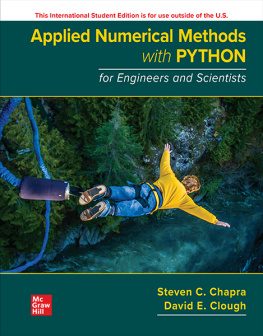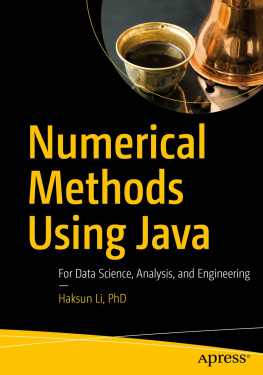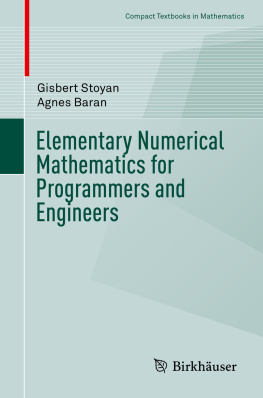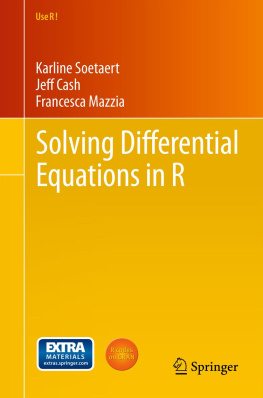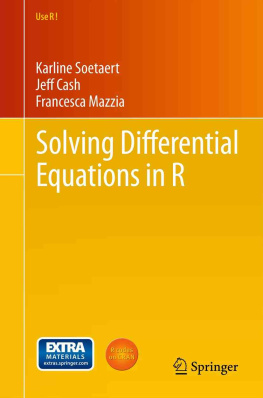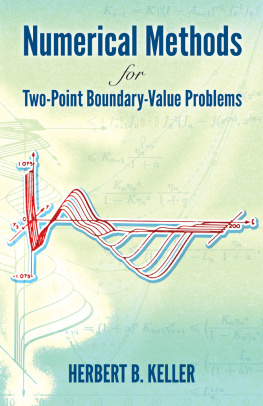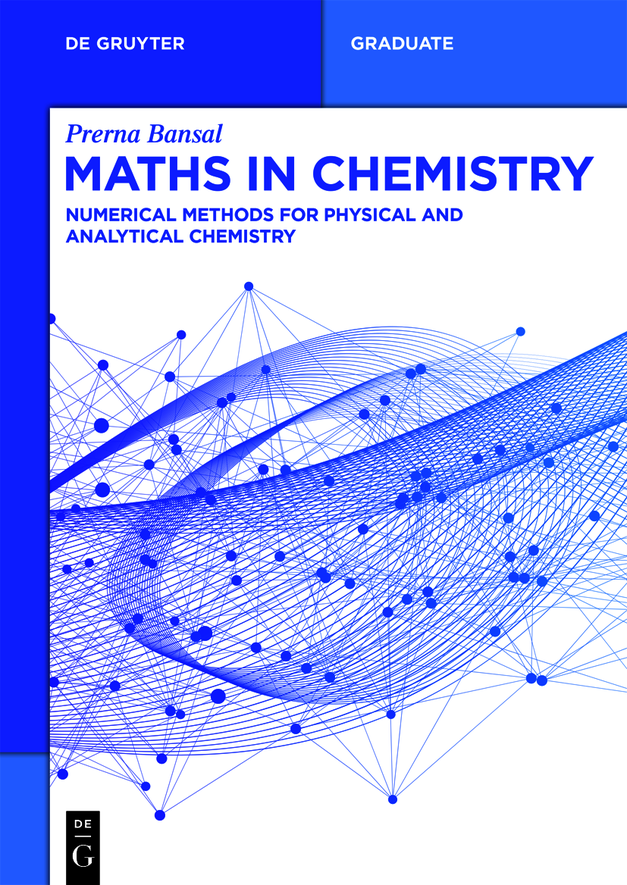De Gruyter Textbook
ISBN 9783110695311
e-ISBN (PDF) 9783110695328
e-ISBN (EPUB) 9783110695489
Bibliographic information published by the Deutsche Nationalbibliothek
The Deutsche Nationalbibliothek lists this publication in the Deutsche Nationalbibliografie; detailed bibliographic data are available on the Internet at http://dnb.dnb.de.
2020 Walter de Gruyter GmbH, Berlin/Boston
Dedicated
To
My Parents
Acknowledgement
I owe this book to all those who encouraged me in some way or another to write this book. The source of inspiration for writing this book came from my students.
I entirely dedicate this book to my beloved Parents who love me immensely and unconditionally and without whom I would have not been able to start writing a book in the first place. They have been a source of constant strength, support and love in difficult times. I am highly indebted for their constant patience for bearing with me while I was writing this book.
I would also like to express my heartfelt gratitude to my brother Mayank for putting up with me when I used to make odd asks. I also owe a special thanks to my two lovelies Divit and Ishaani for their beautiful smiles and laughters which used to melt my stress in a blink. This acknowledgement would have been incomplete without mentioning my beautiful sister Sonia for her excellent advice at all times when when she was busy with her Ph.D work.
I express my gratitude to all my students who believed in me and kept asking me to write a book which can provide all the mentioned topics under a single wing. I would also like to express my sincere gratitude to all my teachers who taught me and inspired me to be the one.
I also express a sincere word of thanks to my Husband Anup Goel who kept boosting my morale during the final stages of this manuscript completion for when I met him first. I really owe him for his constant support and encouragement during the entire process of its proof reading.
I also owe a word of thanks to my new family including my Father-in-law, Mother-in-law and my Brother-in-law for their support during the proof reading of this book.
I express my sincere thanks to the publisher De Gruyters for their cooperation and processing of this manuscript. I also want to express a special word of thanks to Emma Svensson, Ute Skambraks and Dipti Dange for their constant help and support.
Above all, I would like to say thanks to Thakurji for providing me courage, motivation, strength and above all, his grace for giving me enough courage for writing this book.
July 2020
Chapter 1 Units and measurements
1.1 Introduction
In science, especially physical chemistry, quite a lot of measurements are involved. A physical quantity holds a great importance. A physical quantity is the product of two quantities, that is, a unit and a number. While measuring any parameter in physical chemistry, number itself is not relevant unless it is hooked to a unit. For instance, 6 metre has the number 6 and unit metre. Also, while correlating two physical quantities, constant and variables are involved. A constant is a physical quantity that has a fixed value, for example, Plancks constant (h=6.6261034 J s) and Avogadros constant (NA=6.0231023 mol1). A variable, on the other hand, is a quantity that can have any permissible values based on some other quantities for which the given variable is a function, for example, p is a function of V, T, n, that is,
(1.1) p=nRT/V
where p can be represented as p=f(V,T,n).
Further, the variables are classified as dependent and independent variables. In the earlier example, since p is a function of V, T and n, p is a dependent variable while the rest are independent variables.
1.2 Basic arithmetic operations
A physical quantity is often the result of correlation of other physical quantities that are related by mathematical operators. To do so, basic arithmetic operations are performed on these quantities. We are all familiar with basic mathematical operations: addition, subtraction, multiplication and division. In this section, we will simply sum up the basics learned so far ().
Table 1.1: Mathematical operations.
| Operation | Expression | Ordering |
|---|
| Addition | A+B | A+B=B+A |
| Subtraction | AB | ABBA |
| Multiplication | ABorA.BorAB | AB=BA |
| Division | ABorAB | ABBA |
Some of the equations used in physical chemistry involving these operations are listed below:
(1.2) Idealgasequation:pV=nRT
(1.3) HendersonHasselbalchequation:pH=pKa+log(acid/salt)
(1.4) Einsteinequation:E=mc2
(1.5) Nernstequation:E=E0(RT/nF)logQ
(1.6) Onsagerequation:=0bc
(1.7) Arrheniusequation:k=Aexp(Ea/RT)
1.3 Hierarchy of operations
Before performing arithmetic operations, there are some set of rules that should be followed. In conventional mathematics, BODMAS rule is used. They are also called operator precedence or rules of precedence or order of operations. A general method of remembering them is used in different places. For example, PEMDAS is the acronym used in the United States. The order of operations is as follows:
Parentheses
Exponential
Multiplication
Division
Addition
Subtraction
According to these rules, parentheses precede exponents which precede multiplication and division. While solving parentheses, the functions inside the parentheses are solved inside the parentheses itself, and is then expanded further. Also, the other operators are solved from left to right. For example,
23+4=6+4=10
But 2(3+4)=27=14
5+41/2=5+2=7
But (5+4)1/2=3
(48)2=322=16.But(462)=242=12
Index rule
According to the index rule, index denotes the times a number has to be multiplied by itself, where index is a number which is raised to a power. The rule can be illustrated below.
axay=ax+ye.g.2325=28
ax/ay=axye.g.25/23=22
(ax)y=(ay)x=axye.g.(23)2=64
ax=1/axe.g.(2)1=1/2=0.5
(ab)x=axbxe.g.(23)4=2434=1296
abx=axbxe.g 234=2434
(a+b)nan+bne.g.(2+3)4=625 while 24+34=97 . Hence, both are not equal.
1.4 Classification of unit system
The history of unit systems begins with the British Imperial System of units, followed by US Customary and International System of Units (metric system). Of all, the metric system of units was a more coherent system of units since it was easy to use and one may not use extra conversion factors that are not available in the equation.
1.4.1 Metric system of units
The metric system is the most common and internationally accepted decimalized system of measurement also known as SI unit system. It is classified in terms of base units (fundamental) and derived units. These units can be used to define any other physical quantities. The metric system of units is easy to use with the help of multiples and fractions. In fact, the earlier used US Customary unit system and British Imperial unit system are defined using the metric unit system.
The very idea of introducing the metric system was to have a unit system derivable from an unchanging phenomenon but practical limitations made the use of artefacts (prototype for metre and kilogram) indispensable. The multiples and submultiples of metric units in terms of powers of ten make them conveniently useful with prefixes in the names. Metric system exists in various forms with the option of choosing different base units. CGS (centimetregramsecond) and MKS (metrekilogramsecond) are also known as metric system. FPS (footpoundsecond) is known as British System. SI unit system is more precise form of MKS system. Metric units are widely used and accepted system of units in science.


